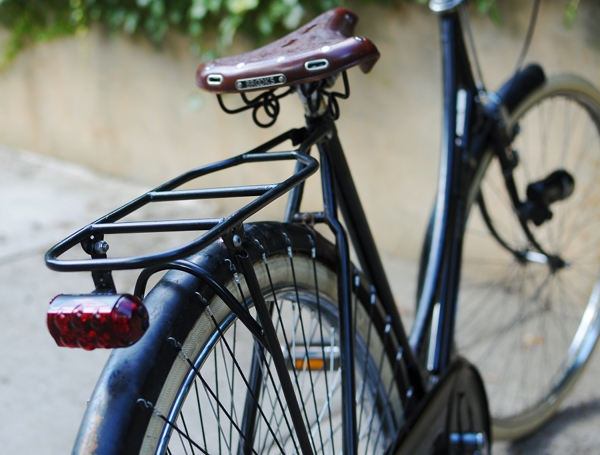 For the past month, I have been working on a rear rack prototype for the Bella Ciao "Superba" (which will look nothing like the Roadster rack above), so racks have been on my mind lately. I've been checking out the racks on practically every bike I see, and also paying attention to how I typically use mine.
For the past month, I have been working on a rear rack prototype for the Bella Ciao "Superba" (which will look nothing like the Roadster rack above), so racks have been on my mind lately. I've been checking out the racks on practically every bike I see, and also paying attention to how I typically use mine. Although on occasion I will carry a substantial amount of weight on the rear rack of my bike, more often than not all I carry is a single pannier or bag. Sometimes there are groceries and packages involved, and even those often fit into a single large pannier. Once in a while, I will strap an item or two to the top of the rack, but it is not an everyday occurrence. When I look around at other cyclists, at least in the Boston area, I see mostly the same: One or two panniers attached to the side of the rack, or a bag strapped to the top. If I see more than that being transported (on a regular bike, not an Extracycle or a "utility bike"), it's an anomaly.
What about you? Be honest - how much do you really carry on your bicycle's rear rack on a typical day, assuming that it is a standard city bike?
Looking at other cyclists in the Boston area, I've also noticed a gender difference in how much stuff cyclists carry - with women typically having fewer things strapped to the rear rack than men. But there could be many factors accounting for this, and I am not sure how typical this trend is overall.
 In addition to how much stuff I carry on the rear racks of my bicycles, I have also been trying to note in what ways I find them convenient versus not. For example, I often lament the lack of bungee cord attachment points on my Gazelle's rear rack. Also, not all racks are compatible with all pannier attachment system - the spacing of the slats on some racks can interfere with the spacing of the hooks. What major complaints, if any, do you have about the rear rack on your main transportation bicycle? You can select multiple items on this one:
In addition to how much stuff I carry on the rear racks of my bicycles, I have also been trying to note in what ways I find them convenient versus not. For example, I often lament the lack of bungee cord attachment points on my Gazelle's rear rack. Also, not all racks are compatible with all pannier attachment system - the spacing of the slats on some racks can interfere with the spacing of the hooks. What major complaints, if any, do you have about the rear rack on your main transportation bicycle? You can select multiple items on this one:Having discovered how to embed these polls and surveys, I admit it's fun to set them up and then look at all the results - but hopefully also useful. I will soon be receiving a sample of the "Superba" rack prototype, and from there it should be just a matter of time until we're done. These racks will fit a standard 700C wheel bike, and regardless of whether you are interested in a "Superba" bicycle, the racks may be available for sale on their own. They won't be sold by me, but I will keep you posted - and your input will certainly be valuable.
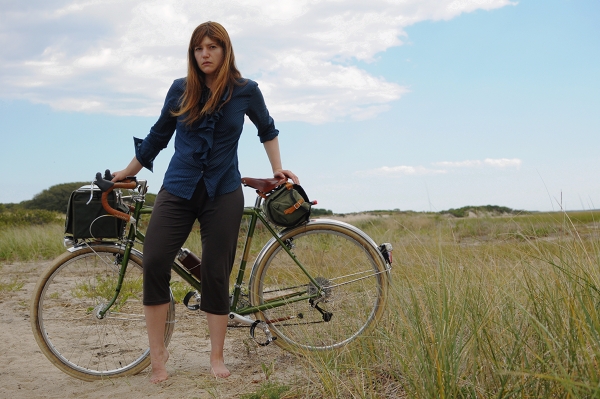 Just to make sure that nobody would be envious of my stay on Cape Cod, I went and got sick last week. While normal people catch cold, get over it, and go on with their lives, for me illness tends to be "epic". So lately my world has consisted of watching the ocean wistfully while bundled up on the porch, drinking endless hot fluids and medications, working on my laptop, and very minimal cycling to town and back. My bicycle looks at me with scorn, as if to say "How could you!" Which brings me to the question: Do you cycle when you are sick?
Just to make sure that nobody would be envious of my stay on Cape Cod, I went and got sick last week. While normal people catch cold, get over it, and go on with their lives, for me illness tends to be "epic". So lately my world has consisted of watching the ocean wistfully while bundled up on the porch, drinking endless hot fluids and medications, working on my laptop, and very minimal cycling to town and back. My bicycle looks at me with scorn, as if to say "How could you!" Which brings me to the question: Do you cycle when you are sick?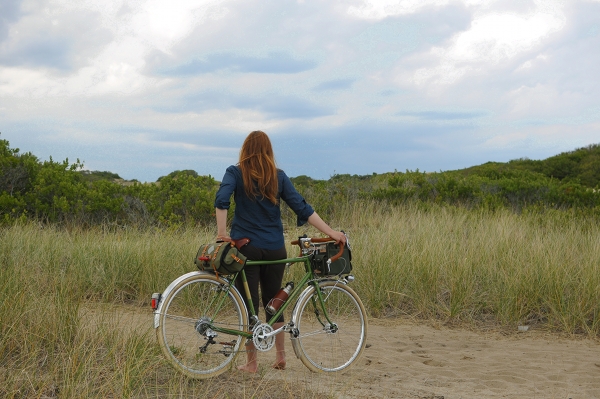 Previously I would have answered "yes", but staying here makes me realise that it partly depends on the bike as well. I have a relatively easy time riding an upright bicycle slowly while feeling unwell, but am finding it almost impossible to ride a roadbike in that state. Not only is the speed more than my lungs can handle, but I also have trouble with balance and coordination. On my upright bikes this is not an issue, since their position is almost identical to sitting in a chair and the loop frame is easy to mount and dismount. I am starting to really miss my Gazelle- imagining her,in my hallucinatory state,as a Dutch nurse feeding me spoonfuls of medicine and wrapping me in folksy-patterned quilts.
Previously I would have answered "yes", but staying here makes me realise that it partly depends on the bike as well. I have a relatively easy time riding an upright bicycle slowly while feeling unwell, but am finding it almost impossible to ride a roadbike in that state. Not only is the speed more than my lungs can handle, but I also have trouble with balance and coordination. On my upright bikes this is not an issue, since their position is almost identical to sitting in a chair and the loop frame is easy to mount and dismount. I am starting to really miss my Gazelle- imagining her,in my hallucinatory state,as a Dutch nurse feeding me spoonfuls of medicine and wrapping me in folksy-patterned quilts.
 It was raining so hard, that I felt as if I was swimming rather than cycling: I had to keep wiping water off of my face. Between the darkness and the rain, it all looked like an impressionist painting.
It was raining so hard, that I felt as if I was swimming rather than cycling: I had to keep wiping water off of my face. Between the darkness and the rain, it all looked like an impressionist painting. Nonetheless, the ride itself was quite comfortable.
Nonetheless, the ride itself was quite comfortable.  There were almost no other cyclists out, and one of the few I did see had an accident right in front of me: While turning a corner, she rode over some leaves and her bicycle flipped sideways. I knew that this could happen, but have never experienced it or seen it. She was cycling slowly, and it still happened. The cyclist was not hurt (I stopped to make sure she was all right), but still - falling like that could not have been pleasant. It seems that wet leaves really are extremely slippery and it is important to avoid them, especially when cornering.
There were almost no other cyclists out, and one of the few I did see had an accident right in front of me: While turning a corner, she rode over some leaves and her bicycle flipped sideways. I knew that this could happen, but have never experienced it or seen it. She was cycling slowly, and it still happened. The cyclist was not hurt (I stopped to make sure she was all right), but still - falling like that could not have been pleasant. It seems that wet leaves really are extremely slippery and it is important to avoid them, especially when cornering. Here we are together in the rainy darkness. Not very flattering to either of us, but it captures the mood. My true all-weather friend. I must not forget this the next time I compare her to faster and more nimble bikes.
Here we are together in the rainy darkness. Not very flattering to either of us, but it captures the mood. My true all-weather friend. I must not forget this the next time I compare her to faster and more nimble bikes.
 When it comes to bicycle lighting, our primary objective is to be extremely visible. On bicycles without a dynamo, this means LED lighting. One downside to LED lights, is that most of what's currently on the market looks very modern and "techy".We try to find LED lights that are both the brightest and the least in conflict with the classic looks of our bikes. A good example of that is the set-up on my vintage Raleigh DL-1 (above). I have received some emails asking how those lights are attached, and so I will describe it here.
When it comes to bicycle lighting, our primary objective is to be extremely visible. On bicycles without a dynamo, this means LED lighting. One downside to LED lights, is that most of what's currently on the market looks very modern and "techy".We try to find LED lights that are both the brightest and the least in conflict with the classic looks of our bikes. A good example of that is the set-up on my vintage Raleigh DL-1 (above). I have received some emails asking how those lights are attached, and so I will describe it here. Like all of our LED lights, the lights on this bicycle are by Cateye - a company whose products seem to be consistently good. The headlight is the Opticube
Like all of our LED lights, the lights on this bicycle are by Cateye - a company whose products seem to be consistently good. The headlight is the Opticube  The Opticube headlight is sold with a
The Opticube headlight is sold with a  Here is another view of this setup. You can see how the Minoura Besso mount is attached to the fork blade, and the
Here is another view of this setup. You can see how the Minoura Besso mount is attached to the fork blade, and the  Yet another view from the back. I should note that some are against attaching a headlight to the fork blade, based on the idea that it can slip down and fall into the spokes. Personally, I think that this really depends on your attachment method. If you use a proper mount and attach it tightly, it seems extremely stable and not in the least prone to slippage. If you've had a bad experience with this method, please let me know; so far I have not heard of any.
Yet another view from the back. I should note that some are against attaching a headlight to the fork blade, based on the idea that it can slip down and fall into the spokes. Personally, I think that this really depends on your attachment method. If you use a proper mount and attach it tightly, it seems extremely stable and not in the least prone to slippage. If you've had a bad experience with this method, please let me know; so far I have not heard of any. This is what the headlight looks like in motion, "in the wild". From a short distance it actually resembles a vintage light, and it certainly comes across that way in pictures like these. Of course, up close you can tell that it is modern, but the design is nonetheless one of the most elegant ones available, as far as modern bike lights go.
This is what the headlight looks like in motion, "in the wild". From a short distance it actually resembles a vintage light, and it certainly comes across that way in pictures like these. Of course, up close you can tell that it is modern, but the design is nonetheless one of the most elegant ones available, as far as modern bike lights go. For tail lights, we use two Cateye TL-LD610 lights, attaching one to each rear stay in the same way as on our Pashleys.
For tail lights, we use two Cateye TL-LD610 lights, attaching one to each rear stay in the same way as on our Pashleys. The diameter of the rear stays is usually not large enough to fit these lights, but they are sold with plastic liners to expand the stay diameter.
The diameter of the rear stays is usually not large enough to fit these lights, but they are sold with plastic liners to expand the stay diameter. Using these two light strips on the rear stays is the nicest tail light setup we can think of. Not only does it make the bicycle highly visible in traffic, but it also gives the cars a good feel for its width - which can be very important in the dark.
Using these two light strips on the rear stays is the nicest tail light setup we can think of. Not only does it make the bicycle highly visible in traffic, but it also gives the cars a good feel for its width - which can be very important in the dark. And as far as aesthetics go, attaching the lights along the stays creates a very natural, unobtrusive look that does not conflict with any part of the bicycle's design.
And as far as aesthetics go, attaching the lights along the stays creates a very natural, unobtrusive look that does not conflict with any part of the bicycle's design. My descriptions make it seem like the lights - especially the headlight - are a pain to attach, and I have to admit they kind of are. But you only need to do it once, and in the end it is worth it: Top of the line illumination, maximum safety, and classic looks will be your rewards.
My descriptions make it seem like the lights - especially the headlight - are a pain to attach, and I have to admit they kind of are. But you only need to do it once, and in the end it is worth it: Top of the line illumination, maximum safety, and classic looks will be your rewards.


 Will on pitch one...waiting for the money to come.
Will on pitch one...waiting for the money to come.













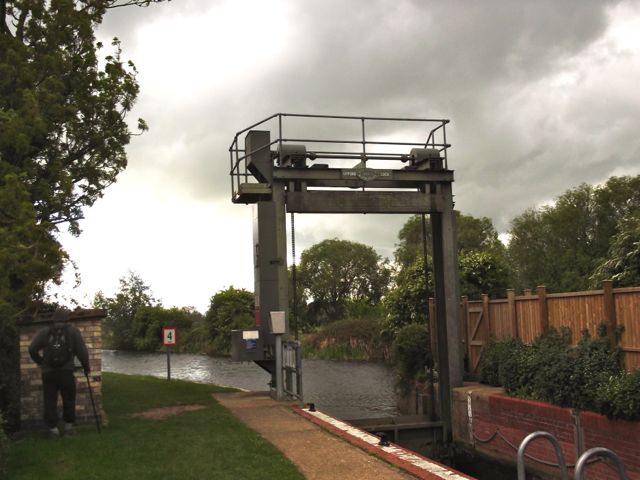
 And the views were fantastic. This one is looking towards the Window.
And the views were fantastic. This one is looking towards the Window. At one particularly disheartening moment, this beautiful bird flew by and stopped in the tree next to me. Its sweet song lifted my spirits and brightened an already wonderful day.
At one particularly disheartening moment, this beautiful bird flew by and stopped in the tree next to me. Its sweet song lifted my spirits and brightened an already wonderful day. The view from where I turned around. Casa Grande on the right and the Basin to the left, center.
The view from where I turned around. Casa Grande on the right and the Basin to the left, center. Today we left New York and started our journey back south. We landed in Lebanon, PA and are staying at the Thousand Trails there.
Today we left New York and started our journey back south. We landed in Lebanon, PA and are staying at the Thousand Trails there.
 We were good, except for the heat pump unit which was a little too close for my comfort. We made it through though and were good to go. Oddly enough, this is normal for us to stop and get out of the truck and do this. I'm sure others don't quite see it that way though!
We were good, except for the heat pump unit which was a little too close for my comfort. We made it through though and were good to go. Oddly enough, this is normal for us to stop and get out of the truck and do this. I'm sure others don't quite see it that way though!


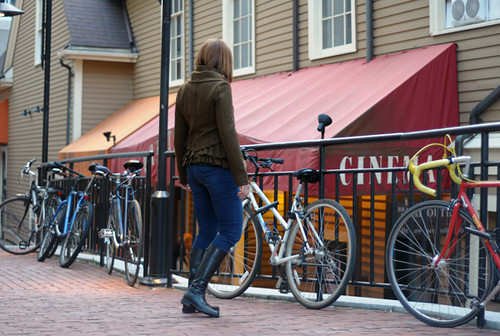 ...you're tempted to stop and examine every bike you see, no matter how nice or "crappy." Your walking companions are accustomed to this and stop in front of bicycles pre-emptively when you are with them.
...you're tempted to stop and examine every bike you see, no matter how nice or "crappy." Your walking companions are accustomed to this and stop in front of bicycles pre-emptively when you are with them. ... you walk by a freshly painted house or fence and wonder what the closest matching RAL colour code would be. You narrow it down to two, both of which you remember by heart.
... you walk by a freshly painted house or fence and wonder what the closest matching RAL colour code would be. You narrow it down to two, both of which you remember by heart.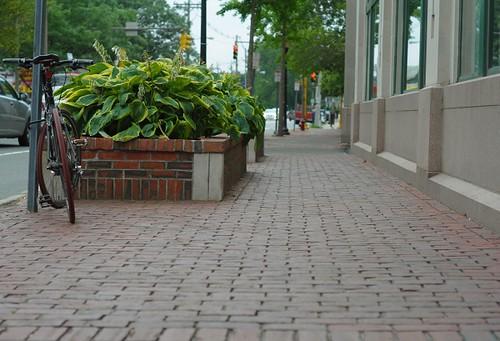 ...you get confused when trying to walk places. You are accustomed to the cycling route.
...you get confused when trying to walk places. You are accustomed to the cycling route. ...you happen upon a scenic spot, and you wonder how well your bike would photograph there.
...you happen upon a scenic spot, and you wonder how well your bike would photograph there.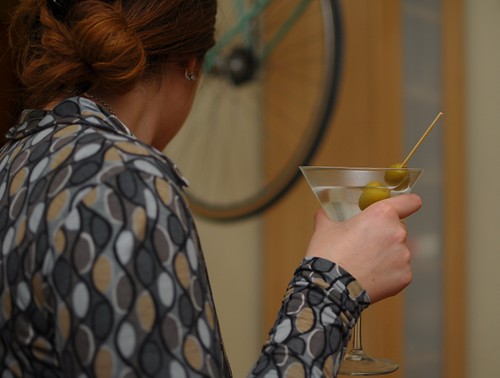 ...it is impossible to snap a photo inside your apartment without getting at least a small piece of bike in the frame.
...it is impossible to snap a photo inside your apartment without getting at least a small piece of bike in the frame. ...you decide to rent a boat on vacation, and it ends up being a pedal boat.
...you decide to rent a boat on vacation, and it ends up being a pedal boat.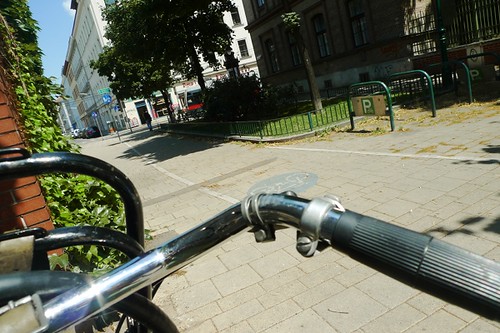 ...you arrive in a foreign country and the first thing you do is sort out your bike situation. Later you also tend to the small stuff, like making sure your mobile phone works and that you can withdraw cash. You don't even bother with public transport.
...you arrive in a foreign country and the first thing you do is sort out your bike situation. Later you also tend to the small stuff, like making sure your mobile phone works and that you can withdraw cash. You don't even bother with public transport.